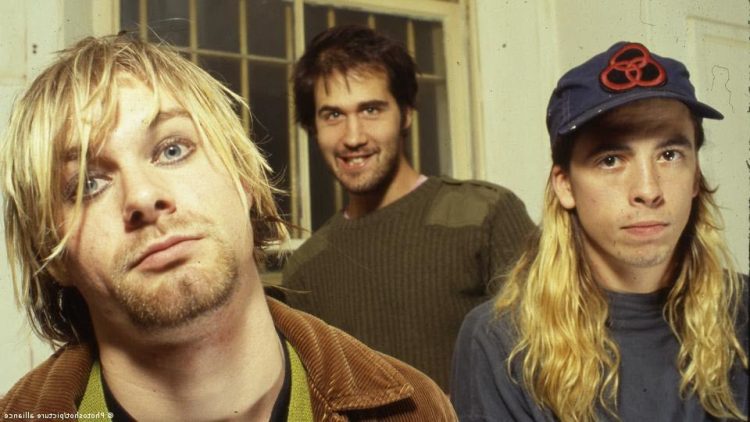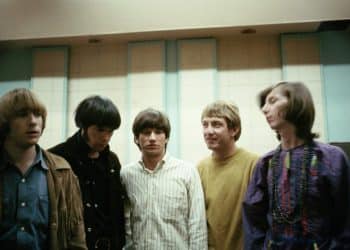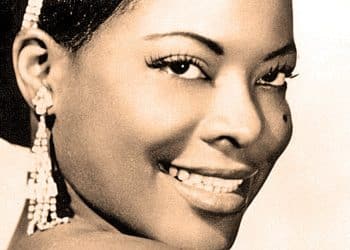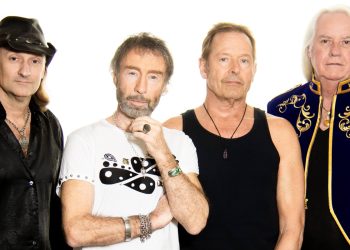Few bands in music history have managed to leave as profound a legacy as Nirvana. Emerging from the Seattle grunge scene in the late 1980s, Nirvana wasn’t just a band—they were a cultural phenomenon. Fronted by the enigmatic Kurt Cobain, alongside bassist Krist Novoselic and drummer Dave Grohl, Nirvana redefined the sound and spirit of rock music. Their raw energy, emotional vulnerability, and rebellious edge resonated deeply with a generation searching for authenticity in an era dominated by polished pop and hair metal.
But what truly sets Nirvana apart is their timeless ability to connect with listeners across decades. From the explosive riffs and haunting lyrics of their breakout hits to the introspective anthems that offer a glimpse into Cobain’s troubled soul, Nirvana’s music remains as relevant today as it was in the early ’90s. Their songs capture the angst, passion, and unfiltered emotion that defined an era, earning them a permanent place in rock history.
In this article, we dive into Nirvana’s most iconic tracks—the songs that became the soundtrack of a generation and continue to inspire fans worldwide. Get ready to relive the magic as we count down the top 10 most popular Nirvana songs of all time!
1. Smells Like Teen Spirit (1991)
When Smells Like Teen Spirit dropped as the lead single from Nevermind in 1991, no one could have predicted the cultural earthquake it would trigger. With its electrifying guitar riff, Kurt Cobain’s anguished vocals, and a chorus that begged to be screamed at the top of your lungs, the song became the defining anthem of a generation.
From the very first notes, Smells Like Teen Spirit encapsulated the raw energy and discontent bubbling beneath the surface of early ’90s youth culture. The lyrics, though often cryptic, captured a feeling of rebellion, alienation, and apathy that resonated deeply with listeners. Cobain himself was surprised by the song’s massive success, even growing frustrated with its mainstream appeal, but that didn’t stop it from becoming one of the most influential rock songs of all time.
The track’s music video, featuring an anarchic high school gym setting, added to its mystique and helped fuel Nirvana’s rise to superstardom. Smells Like Teen Spirit wasn’t just a hit—it was a revolution. It brought grunge to the mainstream, signaled the end of ’80s hair metal dominance, and made Nirvana the reluctant voice of a generation. Even today, its impact remains undeniable, solidifying its place as one of rock’s greatest anthems.
2. Come As You Are (1991)
With its hypnotic, watery guitar riff and haunting lyrics, Come As You Are stands as one of Nirvana’s most recognizable and enduring tracks. Released as the second single from Nevermind, the song showcased a slightly moodier and more introspective side of the band, in contrast to the explosive energy of Smells Like Teen Spirit.
Lyrically, Come As You Are carries a sense of ambiguity—an invitation, perhaps, but also a warning. Cobain’s delivery is both welcoming and foreboding, hinting at themes of identity, acceptance, and contradiction. Lines like “And I swear that I don’t have a gun” have been the subject of endless analysis, especially in light of Cobain’s tragic fate.
The song’s murky tone and layered production reflect Nirvana’s ability to blend raw emotion with a refined, almost hypnotic atmosphere. The track quickly became a fan favorite, helping Nevermind maintain its dominance on the charts. Even today, Come As You Are remains a hauntingly beautiful reminder of Nirvana’s unparalleled ability to craft songs that feel both deeply personal and universally relatable.
3. Lithium (1991)
A rollercoaster of quiet introspection and explosive catharsis, Lithium is one of Nirvana’s most dynamic and emotionally charged songs. Featured on Nevermind, the track explores themes of faith, loneliness, and mental health, delivered through Cobain’s signature blend of cryptic lyricism and raw, unfiltered emotion.
The song’s structure is deceptively simple: gentle, almost detached verses explode into ferocious, distorted choruses where Cobain repeatedly screams, “Yeah!” This contrast perfectly mirrors the themes of inner turmoil and numbness. Lithium tells the story of someone finding solace in religion, possibly as a coping mechanism for pain and loss, though Cobain’s lyrics remain open to interpretation.
Musically, the track is a masterclass in tension and release. The soft verses, accompanied by a steady bassline, lull the listener into a false sense of calm before the distortion-heavy chorus crashes in like a tidal wave. This push-and-pull dynamic is what makes Lithium so powerful—it’s a song that feels like an emotional breakdown in real-time.
Upon release, Lithium became one of Nirvana’s most beloved songs, further cementing Nevermind as a defining album of its era. Its raw energy and deeply introspective lyrics ensure that it remains a standout in Nirvana’s catalog, still striking a chord with listeners decades later.
4. Heart-Shaped Box (1993)
Released as the lead single from In Utero in 1993, Heart-Shaped Box is a haunting, emotionally charged song that showcases Nirvana at their most raw and enigmatic. The track’s eerie melody, cryptic lyrics, and heavy guitar work set the tone for In Utero—an album that pushed back against the polished sound of Nevermind and embraced a more abrasive, unfiltered aesthetic.
Lyrically, Heart-Shaped Box is filled with surreal and unsettling imagery, making it one of the most analyzed songs in Nirvana’s catalog. Cobain’s lyrics hint at themes of love, obsession, and pain, though he remained intentionally vague about their meaning. Some believe the song was inspired by his relationship with Courtney Love, while others see it as a broader reflection on fame, addiction, and mortality.
Musically, the song’s quiet-loud dynamics amplify its emotional weight. The soft, almost whispered verses build tension before the chorus erupts with an anguished, distorted wail. The contrast between beauty and aggression makes Heart-Shaped Box one of Nirvana’s most compelling tracks. The accompanying music video, featuring bizarre and disturbing imagery, only added to its mystique.
Despite its darkness, the song became one of Nirvana’s biggest hits, proving that the band could maintain their artistic integrity while still dominating the airwaves. Even today, Heart-Shaped Box remains a fan favorite, a chilling reminder of Cobain’s genius and the emotional depth of Nirvana’s music.
5. In Bloom (1991)
In Bloom is one of Nirvana’s most biting and satirical songs, a track that brilliantly critiques mainstream audiences who embraced the band without truly understanding their message. Released as the fourth single from Nevermind, the song is a perfect example of Cobain’s ability to blend catchy, radio-friendly melodies with sharp, ironic commentary.
Lyrically, In Bloom takes aim at those who sing along to Nirvana’s songs without grasping their deeper meaning. The chorus, “He’s the one who likes all our pretty songs, and he likes to sing along, and he likes to shoot his gun,” serves as a mocking jab at fans who embraced the band’s rebellious image without understanding the substance behind their lyrics. Cobain’s frustration with this aspect of fame is palpable, making In Bloom one of the most self-aware songs in Nirvana’s discography.
Musically, the song follows the classic quiet-loud-quiet dynamic that Nirvana mastered, with mellow verses leading into a bombastic, distortion-heavy chorus. The track’s music video, which parodies ’60s variety shows, further highlights its ironic tone.
In Bloom became one of Nirvana’s biggest hits, proving that even their critiques of mainstream culture could be turned into chart-topping anthems. To this day, it remains one of the band’s most memorable and frequently discussed songs.
6. About a Girl (1989)
About a Girl stands out as one of Nirvana’s most melodic and accessible tracks, a song that bridges the gap between their raw, punk-influenced beginnings and their later mainstream success. Originally released on their 1989 debut album Bleach, the song gained wider recognition when Nirvana performed an acoustic version on MTV Unplugged in New York in 1993.
Unlike the heavier, more aggressive songs on Bleach, About a Girl has a distinctly pop-infused sensibility. Inspired by Cobain’s love of The Beatles, the song features bright, jangly chords and a straightforward structure that sets it apart from the rest of the album’s grunge-heavy sound. Cobain reportedly wrote it in just a few minutes, reflecting on his then-girlfriend Tracy Marander, though the lyrics remain ambiguous enough to resonate beyond their original inspiration.
While About a Girl wasn’t initially released as a single, it became one of Nirvana’s most beloved songs over time. The MTV Unplugged performance, in particular, showcased the band’s ability to strip their music down to its emotional core, proving that Nirvana was more than just loud guitars and angst—they were incredible songwriters as well.
7. All Apologies (1993)
Released on In Utero, All Apologies is one of Nirvana’s most introspective and poignant songs, a track that feels like both an apology and a farewell. With its hypnotic, droning melody and Cobain’s weary yet haunting vocals, the song captures a deep sense of resignation and melancholy.
Lyrically, All Apologies is open to interpretation, with Cobain’s cryptic words reflecting themes of guilt, frustration, and longing for peace. Lines like “What else should I be? All apologies” feel deeply personal, almost as if Cobain is speaking directly to his audience—or perhaps to himself. His wife, Courtney Love, has said the song was written for her and their daughter, Frances Bean, adding another layer of emotion to the track.
The song’s arrangement is deceptively simple but deeply effective. The looping guitar riff and soft, repetitive chorus create a meditative, almost hypnotic effect, making All Apologies feel both comforting and sorrowful at the same time. The acoustic version performed on MTV Unplugged in 1993 is particularly powerful, stripping the song down to its raw emotional essence.
As one of the last songs Nirvana released before Cobain’s passing, All Apologies carries a weight that makes it all the more heartbreaking. It remains one of their most cherished tracks, a quiet yet devastating farewell from one of rock’s most iconic voices.
8. Polly (1991)
A stark departure from the loud, distorted sound that made Nirvana famous, Polly is a chilling acoustic track that tells a disturbing real-life story. Featured on Nevermind, the song was inspired by the harrowing account of a 14-year-old girl who was abducted, tortured, and ultimately escaped her captor. Cobain wrote the song from the perspective of the assailant, a choice that makes the lyrics even more unsettling.
Musically, Polly is stripped down to its bare essentials—just Cobain’s voice, an acoustic guitar, and light percussion. This simplicity allows the haunting lyrics to take center stage. The song’s gentle, almost lullaby-like melody creates a stark contrast to its dark subject matter, making it all the more disturbing. Cobain’s vocal delivery is subdued and almost detached, which adds to the song’s eerie quality.
Despite its unsettling theme, Polly became one of Nirvana’s most well-known acoustic tracks. It also showcased Cobain’s ability to craft deeply affecting songs without relying on the signature loud-soft dynamics of the grunge movement. Over the years, Polly has been interpreted as a critique of violence against women and a disturbing exploration of the mind of an abuser. It remains one of Nirvana’s most thought-provoking and haunting songs.
9. Rape Me (1993)
One of Nirvana’s most controversial and confrontational songs, Rape Me is an unflinching statement against violence and oppression. Released on In Utero, the song’s raw lyrics and deliberately provocative title sparked backlash, but Cobain made it clear that the song was meant as a survivor’s anthem rather than an endorsement of harm.
Musically, Rape Me starts with a deceptively soft acoustic introduction, echoing the melody of Smells Like Teen Spirit, before exploding into an aggressive, distorted chorus. This contrast heightens the song’s intensity, reinforcing its message of defiance and resilience. Cobain’s vocals are both weary and furious, emphasizing the track’s emotional weight.
Lyrically, Rape Me is open to multiple interpretations, but Cobain often described it as a song about reclaiming power in the face of abuse and exploitation. Some listeners saw it as a commentary on the music industry’s commodification of Nirvana, while others viewed it as a broader statement on gender violence. Regardless of its meaning, the song’s directness and refusal to shy away from difficult topics made it one of Nirvana’s most powerful tracks.
Despite—or perhaps because of—its controversial nature, Rape Me remains one of Nirvana’s most discussed songs. It embodies the band’s willingness to challenge societal norms and use music as a vehicle for uncomfortable but necessary conversations.
10. Drain You (1991)
Often overshadowed by Smells Like Teen Spirit, Drain You is one of Nirvana’s hidden gems and a favorite among hardcore fans. Featured on Nevermind, the song captures the band’s signature blend of raw energy, infectious melody, and surreal, cryptic lyrics.
Cobain once stated that he preferred Drain You over Smells Like Teen Spirit and considered it one of Nirvana’s best songs. Lyrically, it is filled with bizarre and playful imagery, referencing themes of love, dependence, and obsession. Lines like “It is now my duty to completely drain you” suggest an intense and consuming relationship, though the exact meaning remains elusive—something Cobain often enjoyed leaving up to interpretation.
Musically, Drain You is built around a driving riff and explosive chorus, embodying the quiet-loud-quiet structure Nirvana mastered. The song’s bridge features a chaotic instrumental breakdown, with distorted guitars and unusual sound effects that create a sense of disorientation before launching back into the final chorus. This experimental touch adds to the song’s unique appeal.
Although it was never released as a single, Drain You became a staple of Nirvana’s live performances. Cobain often spoke about how much he enjoyed playing it, and it remains one of the band’s most underrated yet beloved tracks. With its high-energy delivery and offbeat lyrics, Drain You is a perfect representation of Nirvana’s ability to blend chaos with melody, making it an essential part of their legacy.









